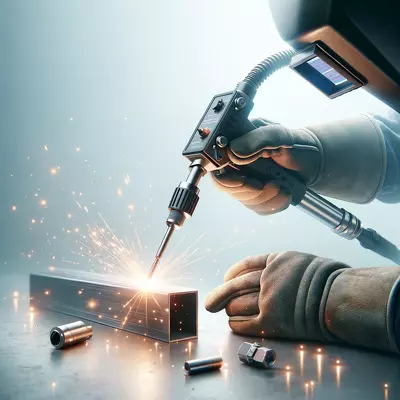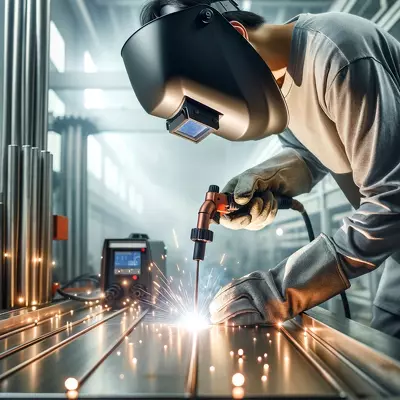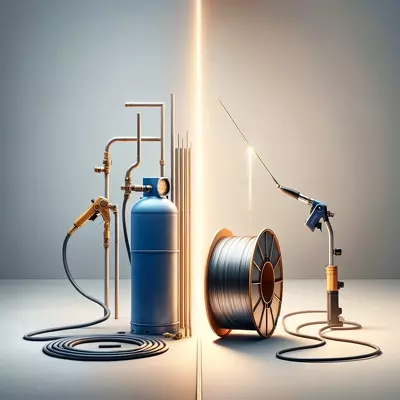From Novice to Expert: Elevating Your Craft with Advanced TIG Welding Steel Settings

TIG welding, a process renowned for its precision and cleanliness, is particularly well-suited for working with steel. However, achieving optimal results requires careful adjustment of settings such as current type, amperage, and gas flow.
I. Introduction to TIG Welding Steel
A. Overview of TIG Welding
Tungsten Inert Gas (TIG) welding stands out in the metalworking world for its ability to produce high-quality, clean welds. This welding technique utilizes a non-consumable tungsten electrode to generate the weld, while an inert gas, usually argon, shields the welding area from atmospheric contamination.
B. Importance of Correct Settings for Steel
When it comes to welding steel, the precision of TIG welding makes it an excellent choice, but only if the settings are correctly adjusted. The right settings ensure the weld is not only aesthetically pleasing but also structurally sound, capable of withstanding stresses without failure.
C. Objectives of This Guide
This guide aims to demystify the various settings and adjustments necessary for TIG welding steel. From the basics of selecting the right current to advanced techniques for managing heat input, our goal is to provide welders with the knowledge they need to improve their welding quality and efficiency.
II. Understanding the Basics of TIG Welding Steel Settings
A. The Role of Current Type in TIG Welding
- AC vs. DC Current: The choice between alternating current (AC) and direct current (DC) plays a pivotal role in TIG welding. DC is typically used for welding steel, as it offers a stable arc and better penetration than AC.
- Selecting the Right Current for Steel: For steel, DC with a straight polarity (DCEN) is preferred because it focuses more heat on the metal, leading to stronger welds.
B. Amperage Settings
- Factors Influencing Amperage Choice: The thickness of the steel, the welding position, and the desired penetration depth all influence the optimal amperage setting. Generally, a higher amperage is necessary for thicker materials.
- Adjusting Amperage for Steel Thickness: As a rule of thumb, 1 amp per 0.001 inch of steel thickness is a good starting point, adjusted based on the specific welding conditions and results.
C. Gas Selection and Flow Rates
- Types of Shielding Gases: Argon is the most commonly used shielding gas for TIG welding steel because it helps produce clean, high-quality welds.
- Determining Optimal Flow Rates: The flow rate of shielding gas should be enough to protect the weld pool without causing turbulence. Typically, 15-20 cubic feet per hour (CFH) is suitable for most applications.
III. Advanced Considerations for TIG Welding Steel
A. The Impact of Filler Material Choice
- Types of Filler Metals: Selecting the right filler metal is crucial for achieving the desired mechanical properties and weld quality. Common choices for steel include ER70S-2 and ER70S-6.
- Matching Filler Metal to Steel Alloy: Matching the filler metal to the specific alloy of steel being welded is essential to ensure compatibility and prevent weld defects.
B. Pulsed TIG Welding Settings
- Benefits of Pulsed TIG Welding: Pulsed TIG welding can help control heat input, reduce distortion, and improve penetration on thinner materials.
- Setting Up Pulsed Welding Parameters: Adjusting the pulse frequency, background current, and peak current according to the material thickness and welding position can optimize weld quality.
C. Managing Heat Input and Distortion
- Techniques to Control Heat Input: Pulsing or adjusting the travel speed can help manage the heat input and prevent overheating of the metal.
- Strategies for Minimizing Distortion: Pre-planning the welding sequence and employing tack welds can minimize distortion during the welding process.
IV. Practical Tips for TIG Welding Steel
A. Preparing Steel Surfaces
Cleanliness is key in TIG welding. Preparing the steel surface by removing any contaminants such as oil, rust, or paint ensures a cleaner, stronger weld.
B. Tack Welding Strategies
Tack welds help hold the workpieces together and prevent distortion. Placing tack welds at regular intervals can help maintain alignment and dimensional accuracy.
C. Troubleshooting Common Issues
From porosity to lack of fusion, common welding issues can often be traced back to incorrect settings or improper surface preparation. Adjusting the welding parameters and ensuring thorough cleaning are usually the first steps in troubleshooting.
V. FAQs
Q: What is the best gas flow rate for TIG welding steel?
A: 15-20 CFH is typically recommended, but this can vary depending on the specific welding conditions.
Q: How do I choose the right filler metal for steel?
A: Match the filler metal to the steel alloy being welded, considering the required mechanical properties of the finished weld.
Q: Can I use TIG welding for all steel thicknesses?
A: TIG welding is versatile and can be used for a wide range of thicknesses, but adjustments in settings are crucial for optimal results.
Q: What causes porosity in TIG welds on steel?
A: Porosity can be caused by contamination on the metal surface or in the shielding gas. Ensure cleanliness and proper gas flow to prevent it.
Q: How do I adjust the amperage for different steel thicknesses?
A: A general guideline is 1 amp per 0.001 inch of steel thickness, adjusted based on welding position and desired penetration.
Q: Is AC or DC better for welding steel?
A: DC with straight polarity (DCEN) is typically preferred for welding steel due to better penetration and arc stability.
Q: How can I reduce heat input when welding thin steel?
A: Pulsed TIG welding or adjusting the welding speed can help control heat input and prevent warping or distortion.
VI. Conclusion
A. Key Takeaways
Understanding and adjusting the TIG welding steel settings according to the specifics of the job at hand can significantly impact the quality of the welds. From the choice of current and amperage to filler metal and gas flow rate, each parameter plays a crucial role in achieving optimal results.
B. Encouragement for Practice and Experimentation
Mastering TIG welding on steel requires practice and a willingness to experiment with different settings. Continuous learning and adaptation will lead to improvements in welding techniques and outcomes.
VII. Suggested Readings
The journey towards becoming a proficient TIG welder is ongoing and bolstered by continuous education and practice. For those looking to deepen their understanding of TIG welding and refine their skills, here are several recommended readings:
- “Welding Principles and Applications” by Larry Jeffus: This comprehensive guide covers a broad range of welding techniques, including detailed sections on TIG welding, and is an invaluable resource for both beginners and experienced welders.
- “The Procedure Handbook of Arc Welding” by The Lincoln Electric Company: With a strong emphasis on practical applications, this book provides a thorough overview of various welding methods, including TIG welding, offering insights into best practices and advanced techniques.
- “Modern Welding Technology” by Howard B. Cary: This text dives deep into the science and technology behind welding, including TIG welding, providing readers with a solid foundation in the principles that underpin this skilled trade.
These books are not only gateways to mastering TIG welding techniques but also serve as reference points for troubleshooting and innovation in welding projects. Each title brings a unique perspective, from practical applications and foundational techniques to advanced methodologies, offering valuable insights regardless of your skill level. Engaging with these materials can elevate your understanding of TIG welding, ensuring that you are well-equipped to tackle the challenges of welding steel with precision and confidence.






